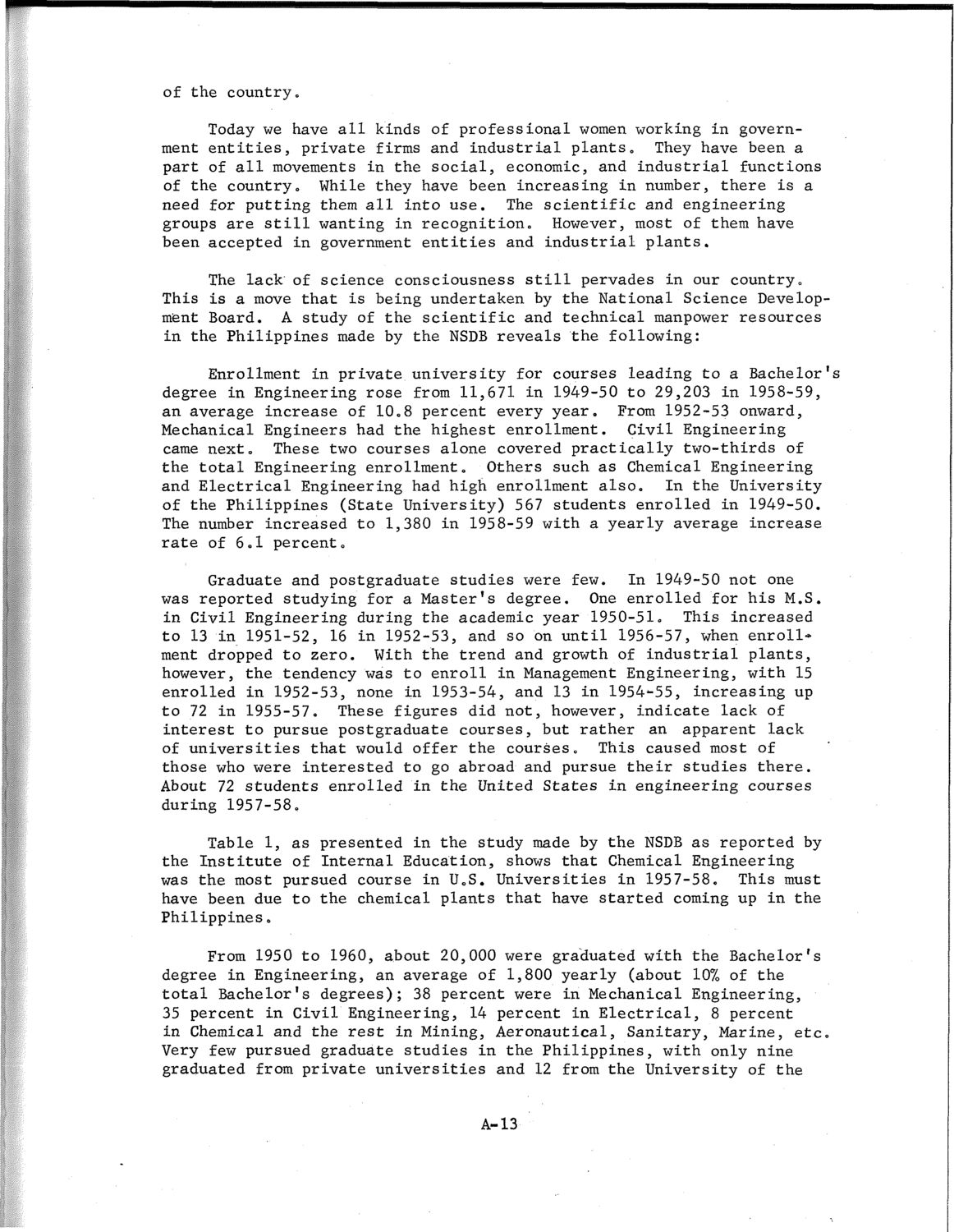| |
| |
Caption: SWE - Proceedings of the First International Conference of Women Engineers and Scientists
This is a reduced-resolution page image for fast online browsing.

EXTRACTED TEXT FROM PAGE:
of the country. Today we have all kinds of professional women working in government entities, private firms and industrial plants. They have been a part of all movements in the social, economic, and industrial functions of the country. While they have been increasing in number, there is a need for putting them all into use. The scientific and engineering groups are still wanting in recognition. However, most of them have been accepted in government entities and industrial plants. The lack of science consciousness still pervades in our country. This is a move that is being undertaken by the National Science Development Board. A study of the scientific and technical manpower resources in the Philippines made by the NSDB reveals the following: Enrollment in private university for courses leading to a Bachelor's degree in Engineering rose from 11,671 in 1949-50 to 29,203 in 1958-59, an average increase of 10.8 percent every year. From 1952-53 onward, Mechanical Engineers had the highest enrollment. Civil Engineering came next. These two courses alone covered practically two-thirds of the total Engineering enrollment. Others such as Chemical Engineering and Electrical Engineering had high enrollment also. In the University of the Philippines (State University) 567 students enrolled in 1949-50. The number increased to 1,380 in 1958-59 with a yearly average increase rate of 6.1 percent. Graduate and postgraduate studies were few. In 1949-50 not one was reported studying for a Master's degree. One enrolled for his M.S. in Civil Engineering during the academic year 1950-51. This increased to 13 in 1951-52, 16 in 1952-53, and so on until 1956-57, when enrollment dropped to zero. With the trend and growth of industrial plants, however, the tendency was to enroll in Management Engineering, with 15 enrolled in 1952-53, none in 1953-54, and 13 in 1954^55, increasing up to 72 in 1955-57. These figures did not, however, indicate lack of interest to pursue postgraduate courses, but rather an apparent lack of universities that would offer the courses. This caused most of those who were interested to go abroad and pursue their studies there. About 72 students enrolled in the United States in engineering courses during 1957-58. Table 1, as presented in the study made by the NSDB as reported by the Institute of Internal Education, shows that Chemical Engineering was the most pursued course in U.S. Universities in 1957-58. This must have been due to the chemical plants that have started coming up in the Philippines. From 1950 to 1960, about 20,000 were graduated with the Bachelor's degree in Engineering, an average of 1,800 yearly (about 10% of the total Bachelor's degrees); 38 percent were in Mechanical Engineering, 35 percent in Civil Engineering, 14 percent in Electrical, 8 percent in Chemical and the rest in Mining, Aeronautical, Sanitary, Marine, etc. Very few pursued graduate studies in the Philippines, with only nine graduated from private universities and 12 from the University of the A-13
| |